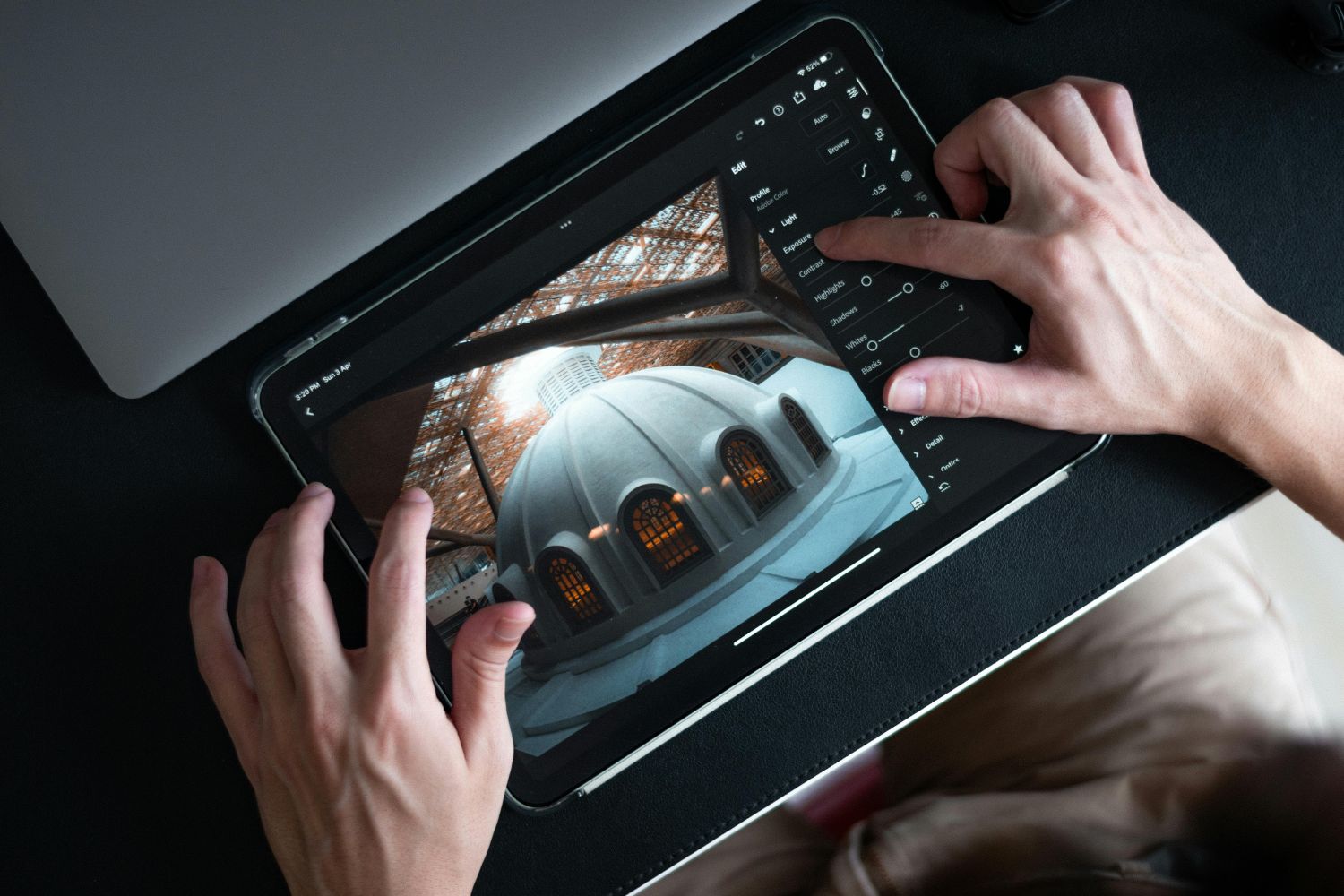- Home
- Articles
- Architectural Portfolio
- Architectral Presentation
- Inspirational Stories
- Architecture News
- Visualization
- BIM Industry
- Facade Design
- Parametric Design
- Career
- Landscape Architecture
- Construction
- Artificial Intelligence
- Sketching
- Design Softwares
- Diagrams
- Writing
- Architectural Tips
- Sustainability
- Courses
- Concept
- Technology
- History & Heritage
- Future of Architecture
- Guides & How-To
- Art & Culture
- Projects
- Interior Design
- Competitions
- Jobs
- Store
- Tools
- More
- Home
- Articles
- Architectural Portfolio
- Architectral Presentation
- Inspirational Stories
- Architecture News
- Visualization
- BIM Industry
- Facade Design
- Parametric Design
- Career
- Landscape Architecture
- Construction
- Artificial Intelligence
- Sketching
- Design Softwares
- Diagrams
- Writing
- Architectural Tips
- Sustainability
- Courses
- Concept
- Technology
- History & Heritage
- Future of Architecture
- Guides & How-To
- Art & Culture
- Projects
- Interior Design
- Competitions
- Jobs
- Store
- Tools
- More
How Smart Cities Are Revolutionizing USA Construction: Key Roles and Innovations

As urbanization accelerates, smart cities are transforming the landscape of construction in the USA. These tech-driven urban areas leverage data, connectivity, and innovative infrastructure to enhance the quality of life for residents while optimizing resource use. We’re witnessing a shift where traditional construction methods are giving way to smarter, more efficient practices.
Incorporating IoT, AI, and sustainable materials, smart cities are setting new standards for building design and urban planning. This evolution not only addresses the challenges of overcrowding and resource management but also paves the way for a more sustainable future. Let’s explore how smart cities are reshaping the construction industry and what this means for our urban environments.

Table of Contents
ToggleThe Role of Smart Cities in USA Construction
Smart cities in the USA revolutionize construction methods, employing innovative tech and data to create efficient urban spaces. They leverage IoT, AI, and sustainability for advanced infrastructure.
What Are Smart Cities?
Smart cities integrate technology and data to enhance urban living. They utilize IoT devices, AI-driven systems, and interconnected networks to optimize various city functions. These cities connect transport, energy, waste, and communication systems for improved efficiency and sustainability.
Why Are Smart Cities Crucial in Modern Construction?
Smart cities are crucial in modern construction for several reasons:
- Resource Management: Efficient use of water, energy, and materials reduces waste and costs. Examples include smart grids and water management systems.
- Sustainability: Adoption of green materials and renewable energy sources supports environmental goals. Solar panels and recycled materials exemplify this.
- Urban Planning: Data-driven insights guide better urban design. Smart sensors track traffic, helping plan efficient roads and transit systems.
- Safety and Security: Advanced surveillance and monitoring systems enhance safety. Examples are IoT-based security cameras and AI-powered threat detection.
- Economic Growth: High-tech infrastructure attracts businesses and investors. Cities like San Francisco and Boston exemplify this economic boost.
By incorporating these elements, smart cities set new standards in construction, ensuring a sustainable and resource-efficient future.

Key Technologies Driving Smart Cities
Smart cities in the USA leverage multiple technologies to drive innovation and efficiency. Central to these advancements are IoT devices and AI integration, which play a pivotal role in urban development.
IoT Devices and Their Impacts
IoT devices connect various urban elements through sensors and communication networks. Traffic lights, for instance, use real-time data to optimize flow and reduce congestion. Smart meters monitor energy consumption, allowing for efficient resource management. Waste management systems employ IoT to optimize collection routes and reduce costs. Each of these technologies contributes to a more responsive, data-driven urban environment.
The Integration of AI in Urban Planning
AI enhances urban planning by analyzing large datasets for optimal decision-making. Predictive analytics help anticipate population growth, enabling better infrastructure design. Machine learning algorithms improve traffic management by predicting and mitigating congestion patterns. AI-driven simulations evaluate the impact of new construction projects before implementation. This technology ensures that urban development is sustainable and efficient.
Smart cities continue to evolve, integrating these technologies to foster safer, more livable environments. These innovations set benchmarks in the construction industry, promoting a future where urban living is synonymous with smart living.
Challenges and Solutions in Developing Smart Cities
Developing smart cities in the USA presents several notable challenges. We must address these for successful urban transformation.
Regulatory Hurdles and Policy Frameworks
Regulatory hurdles create significant barriers. Government policies often lag behind technological advancements, making it difficult to implement cutting-edge solutions quickly. Urban planning laws, zoning regulations, and building codes sometimes conflict with smart city innovations. For example, traditional zoning laws might not accommodate the flexible usage smart buildings offer. Policymakers must update frameworks to support new technologies and align with smart city initiatives. Public-private partnerships can help streamline this process, ensuring regulations evolve alongside technological progress.
Financial and Technological Challenges
Financial constraints and technological complexities pose another significant challenge. Developing smart cities requires substantial investment, and securing funding can be difficult. Many municipalities struggle with limited budgets, making large-scale tech projects less feasible. However, adopting a phased approach allows gradual implementation, easing budget strains over time. Technologically, integration issues can arise due to the coexistence of old and new infrastructure. For example, outdated energy grids may not support advanced IoT devices. Interoperability standards and ongoing technological upgrades are essential to overcome these challenges.

Case Studies of Smart Cities Development in the USA
Several cities in the USA showcase remarkable advancements in smart city development, highlighting successful implementations and valuable lessons. We explore these projects to understand their impact and provide insights for future initiatives.
Success Stories
San Francisco, CA: San Francisco leverages advanced IoT devices to manage traffic, enhance public safety, and optimize energy use. By using real-time data analytics, the city reduces congestion and improves emergency response times. Smart streetlights adjust brightness based on pedestrian activity, conserving energy and enhancing safety.
Chicago, IL: Chicago’s Array of Things (AoT) project deploys a network of sensors to collect data on air quality, temperature, and sound levels. This data enables the city to address environmental issues and improve public health. The insights from AoT help urban planners make data-informed decisions, enhancing overall livability.
Columbus, OH: As the winner of the Smart City Challenge, Columbus integrates multiple smart technologies to improve transportation. Autonomous vehicles, smart traffic signals, and connected infrastructure improve mobility and reduce emissions. The city’s focus on smart mobility enhances accessibility and reduces travel times for residents.
Lessons Learned and Best Practices
Collaboration Is Key: Successful smart city projects often involve partnerships between government, private sector, and academia. San Francisco’s collaboration with tech companies aids in the efficient deployment of IoT solutions. Public-private partnerships drive innovation and resource sharing.
Community Engagement: For smart city initiatives to succeed, engaging the community early is essential. An example of this is the Who’s NearU feature across the office booking platform NearU (nearu.io) where office workers book into nearby spaces to work together and collaborate. Chicago’s AoT project included public forums to address privacy concerns and gain community support. Transparent communication helps build trust and ensures resident needs are met.
Scalability and Interoperability: Investments in scalable and interoperable systems ensure long-term success. Columbus’s smart mobility solutions are designed to expand as technology advances. Emphasizing scalable infrastructure allows cities to adapt and grow with technological changes.
By examining these case studies, we gain a deeper understanding of the transformative potential of smart city development. These insights guide us in creating smarter, more sustainable urban environments.

Conclusion
Smart cities in the USA illustrate how integrating innovative technologies and sustainable practices revolutionizes urban living. By leveraging IoT, AI, and eco-friendly materials, these cities enhance infrastructure, resource management, and residents’ quality of life. Integrating systems such as transportation and energy networks demonstrates the transformative potential of data-driven urban planning.
Projects in cities like San Francisco, Chicago, and Columbus highlight the practical applications of these technologies. They’ve succeeded in managing traffic, enhancing public safety, and improving transportation systems through smart use of IoT and collaborative efforts.
Challenges remain, including regulatory, financial, and technological hurdles. Policymakers must adapt regulations and strategies to foster innovation. Interoperability standards are essential to overcome financial and technological barriers.
Overall, the role of smart cities in USA construction stands out for its capacity to create more efficient, responsive, and sustainable urban environments. Through data analytics and collaborative efforts, we can continue advancing these urban landscapes.
Submit your architectural projects
Follow these steps for submission your project. Submission FormLatest Posts
Architecture Meets Technology: Inside the Digital Construction Workflow
As architecture enters an era shaped by data, simulation, and digital collaboration,...
Best Tablets for Architects and Students in 2026: Performance, Drawing & CAD
In 2026, tablets have become essential tools for architects and architecture students,...
7 Powerful iPad Apps for Modern Landscape Architecture & Garden Design
In 2025, iPad-based workflows have become essential for landscape architects and garden...
How Virtual Architecture Is Redefining Design From Real Time Worlds to Built Impact
Discover how virtual architecture is redefining design from static sketches to immersive,...












Leave a comment